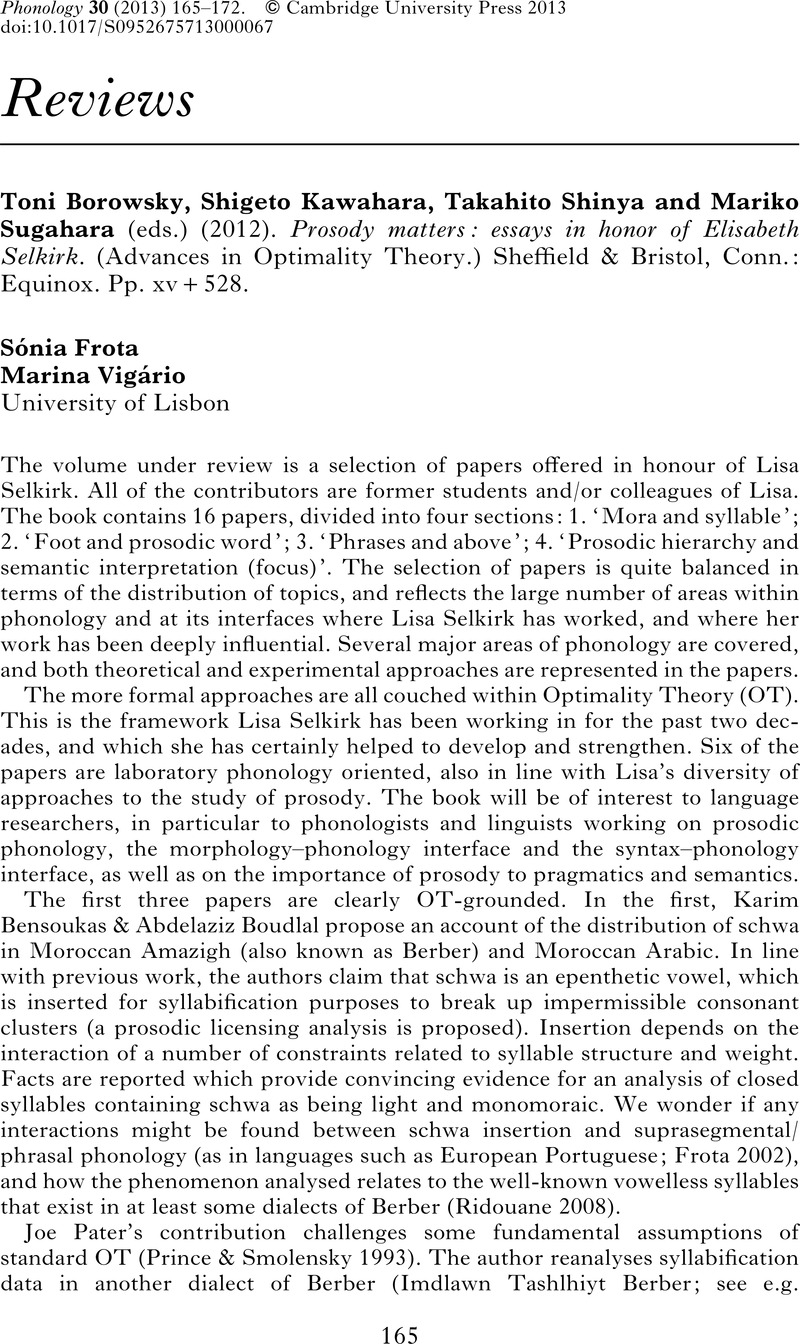Crossref Citations
This article has been cited by the following publications. This list is generated based on data provided by Crossref.
Bennett, Ryan
2015.
Sun-Ah Jun (ed.) (2014). Prosodic typology II: the phonology of intonation and phrasing. Oxford: Oxford University Press. Pp. xv+587..
Phonology,
Vol. 32,
Issue. 2,
p.
337.
Bennett, Ryan
and
Elfner, Emily
2019.
The Syntax–Prosody Interface.
Annual Review of Linguistics,
Vol. 5,
Issue. 1,
p.
151.
Downing, Laura J.
and
Kadenge, Maxwell
2020.
Re-placing PStem in the prosodic hierarchy.
The Linguistic Review,
Vol. 37,
Issue. 3,
p.
433.
Dolatian, Hossep
2021.
The role of heads and cyclicity in bracketing paradoxes in Armenian compounds.
Morphology,
Vol. 31,
Issue. 1,
p.
1.
Dolatian, Hossep
2021.
Cyclicity and prosodic misalignment in Armenian stems.
Natural Language & Linguistic Theory,
Vol. 39,
Issue. 3,
p.
843.
Cheng, Lisa Lai-Shen
and
Downing, Laura J.
2021.
Recursion and the Definition of Universal Prosodic Categories.
Languages,
Vol. 6,
Issue. 3,
p.
125.



